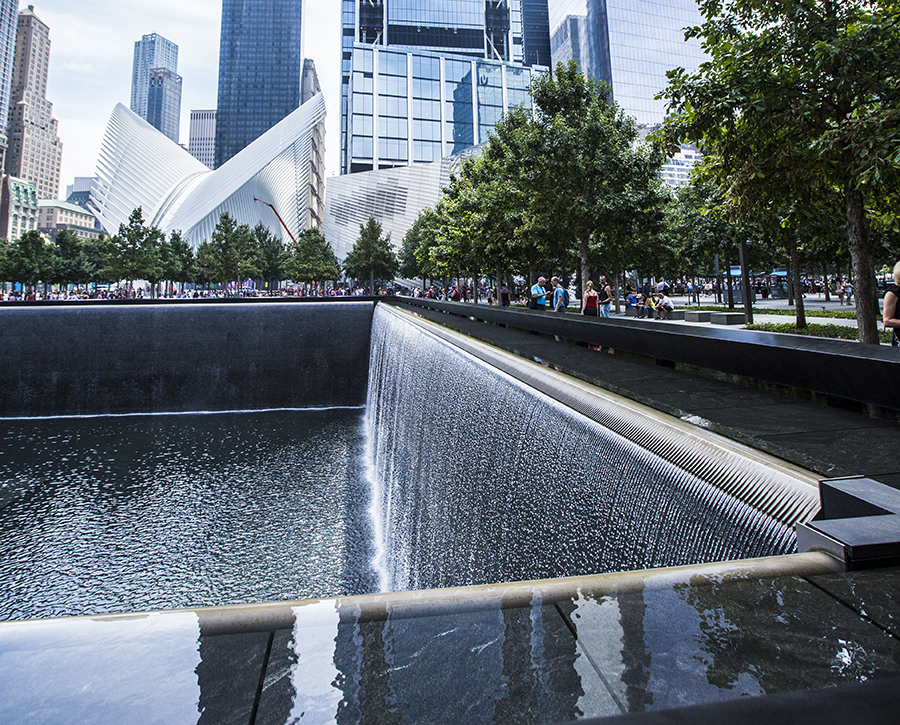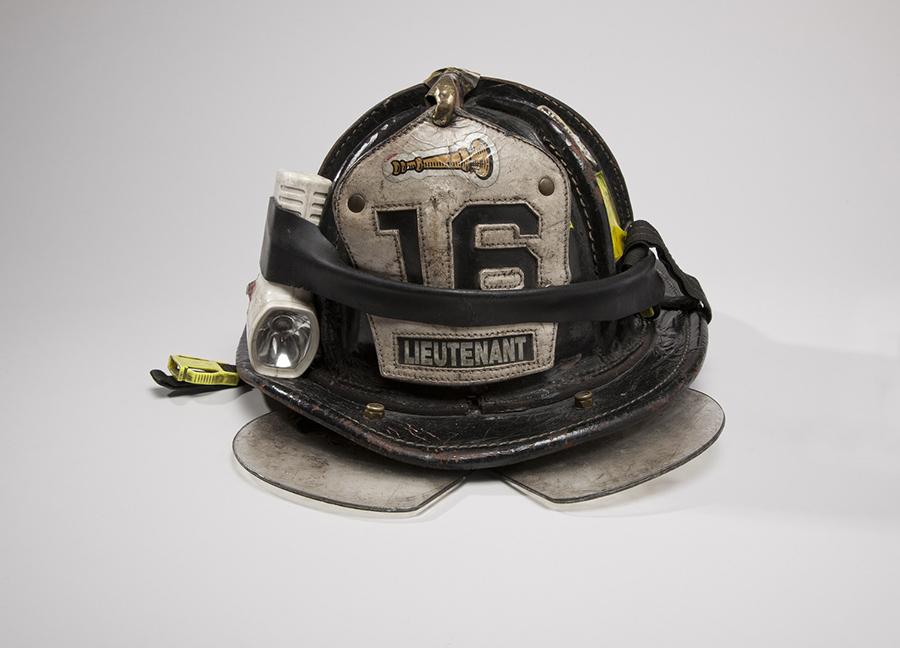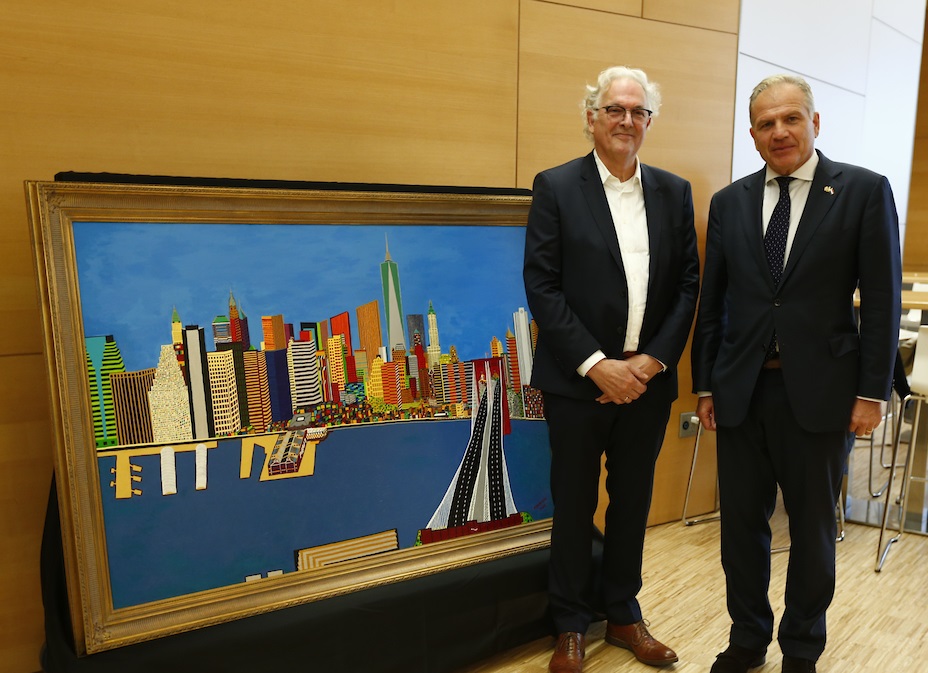One of the first artifacts donated to the 9/11 Memorial Museum recently went on view in the museum’s historic exhibition: an FDNY fire helmet Lt. Mickey Kross wore when he responded to the World Trade Center on 9/11.
Kross’ firehouse, Engine 16 on East 29 Street in Manhattan, received the call to head to the World Trade Center at 8:50 a.m. After reporting to the fire command in the North Tower lobby, he and his men made their way up the building, headed for another command post on the 23rd floor. Kross was in the North Tower aiding in the evacuation when the building collapsed. His miraculous story of survival and the significance of this artifact is detailed in an essay in “The Stories They Tell: Artifacts from the National September 11 Memorial Museum.”
An excerpt from book:
At 10:28, Kross had reached the third floor. And then, “I heard this very, very loud noise above me,” Kross remembered. “It was just a tremendous roar….it sounded like it was coming towards you. And then the wind, a very, very fierce wind. It started lifting me up off the ground. The next thing I knew, I just crouched down, I got to the corner of the staircase by the railing and I just got as small as I could get.…I tried to crawl into my fire helmet, that’s what I wanted to do, just to protect myself.”
The building was falling down on Mickey Kross. “I figured, okay, this could be it. I was a little angry. Like, dammit, why me? I’m gonna die in the World Trade Center on a beautiful summer morning?”
He was pelted down with debris. “It went dark, and the next thing was just total silence. Nothing. No winds, no noise, no light. Nothing.”
Then, voices broke the silence. “I started to hear moaning. Guys were starting to communicate, yell out. They’re calling out, ‘Who’s there? Are you guys alright?’. . . . And I realized I wasn’t alone.”
The voices brought a measure of reassurance, but the confusion remained. They spoke to a firefighter who was buried up to the neck in the stairwell below. “He asked us to say good-bye to his wife and kids.”
Kross and the firefighters took turns transmitting Maydays, but nothing came back. Some two hours later, one of the calls got a reply: “Where are you?” This was a question that had a precise answer—inside stairwell B of the North Tower. Or so they thought.
Outside, the World Trade Center had become a massive pile of fiery wreckage…They were alive but it seemed they were beyond the reach of the rescue. About four hours passed when the darkness was pierced by light. “The strangest thing happened. This beam of sunlight came right in on us.”
It took some time for Kross and the others to be located and to climb a rope out of stairwell B. In all, 16 people came out of the stairwell, including Josephine Harris.
By Jenny Pachucki, 9/11 Memorial Content Strategist


